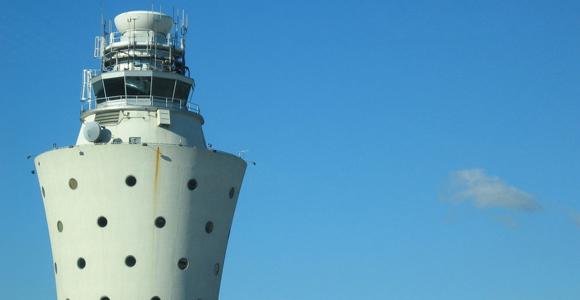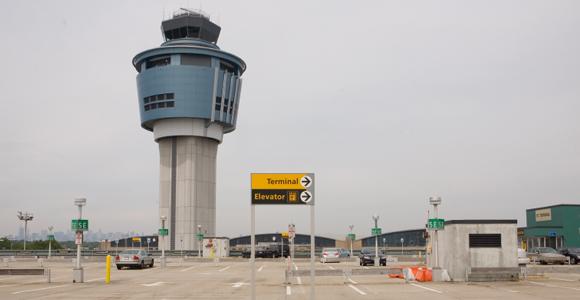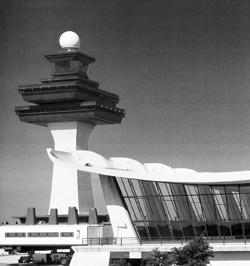There’s LUV at LGA: Landings and Towers


LGA’s now demolished tower.
On July 22nd, a Southwest Airlines 737 suffered a collapse of its nose gear upon landing at La Guardia airport. Ten people were injured.
Investigators are now alleging that the jet’s gear failed not because of a malfunction, but because the pilots managed to land nose-first, causing it to bend backwards, seriously damaging the gear assembly and avionics bay. According to reports, the jet hit the runway at an angle of about three degrees nose-down. That might not sound like much, but even a steep descent is typically made at no more than five degrees or so. And any amount of nose-down pitch on touchdown is a problem. A correct landing attitude, while it varies with wind and other factors, is almost always a few degrees nose-up.
Why is it bad for a plane to land on its nose gear? Well, why is it bad for a bird to land on its face? And if indeed this is what happened at LGA, the question shifts to why and how the pilots found themselves in such an unusual predicament.
It remains true, however, that although landing gear issues are frightening to many people, seldom if ever are they going to result in a crash. Some are more serious than others, but in general they’re pretty innocuous, and from a pilot’s perspective they are way down the list of nightmare scenarios.
This is why, when the Southwest story first broke, I tried to ignore it, hoping it would go away. I find gear problems to be, well, a little boring and not worth a whole lot of attention. But the press was in a bit of a frenzy (so it goes when there’s an airplane accident, no matter how minor, in the heart of the world’s hungriest media market) and I felt obliged to chime in.
Hopefully the result wasn’t to cranky or condescending. You can read the full story in Slate magazine.
In the meantime, let’s change topics a bit…
One thing you might notice in many of the photos of the kneeling 737 at LGA, is the control tower looming in the background.

LGA’s new tower.
Count me among those who miss La Guardia’s previous tower, which was dismantled a couple of years ago. Frequent flyers remember this building well — hourglass-shaped and whimsically bejeweled with a top-to-bottom series of portholes. It was a peculiar, playful structure that stood for 40 years.
Its $70 million replacement is an ugly, brutally functionalist building that looks a prison tower.

Washington-Dulles in 1957.
Airports, like the planes that serve them, have become painfully generic. Functionality aside, part of any airport building’s job is to impart a sense of place — it should be the kind of building that, when you glimpse it on TV or in a movie, even for just a moment, you know exactly where it is.
Fewer and fewer airport facilities are distinctive this way. The spidery “Theme Building” at LAX is maybe the most enduring example. The terminal at Denver is another, with its snow-capped mountain motif, as is Eero Saarinen’s swoopy main terminal at Washington-Dulles. And let’s not forget my sentimental favorite, the twin-stanchion, R2D2 control tower at Boston’s Logan International.
It may not have been state-of-the-art, but La Guardia’s old porthole tower gave a welcoming, almost roguish flourish to an otherwise joyless vista of seawater and concrete. It lent a friendly touch to an airport that, in too many respects, is anything but friendly. It was, almost literally, an exclamation point. It said: La Guardia!
Patrick Smith is an airline pilot and the host of www.askthepilot.com. His new book is “Cockpit Confidential: Everything You Need to Know About Air Travel.” Portions of this story originally ran on the website Salon.
[Photos: selva / Foter / CC BY-NC, istockphoto, x-ray delta one / Foter / CC BY-SA]





















